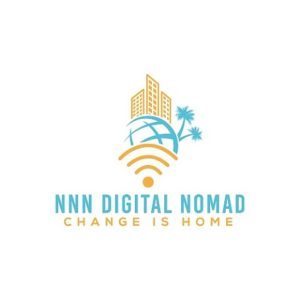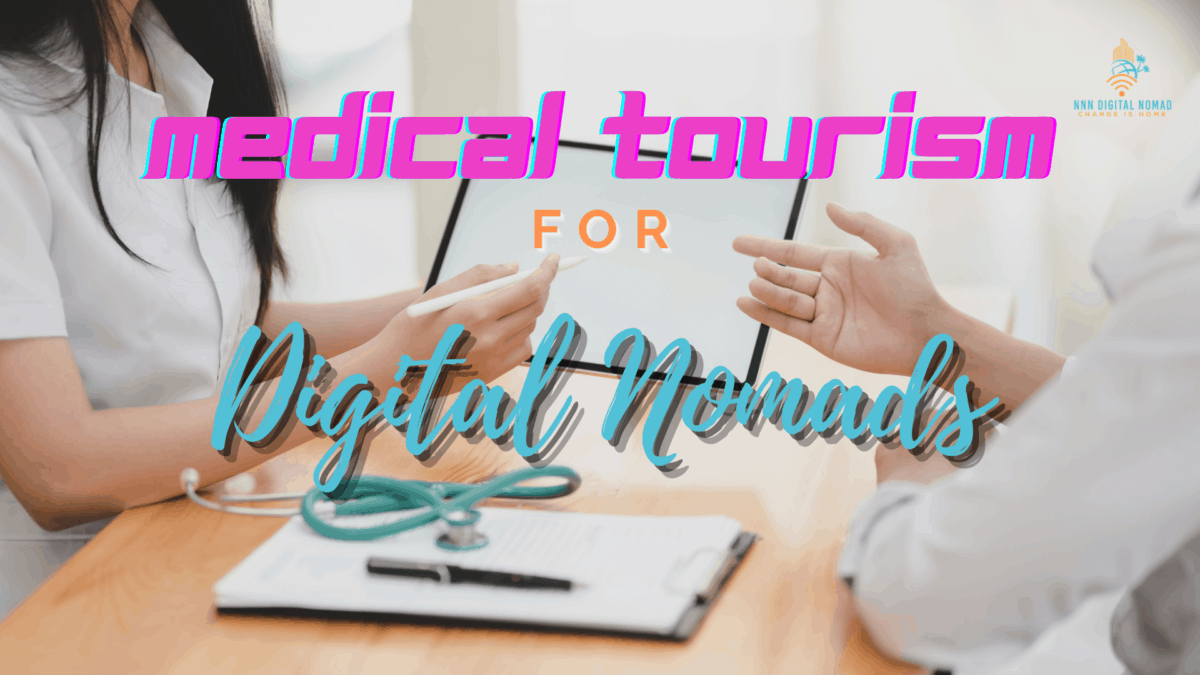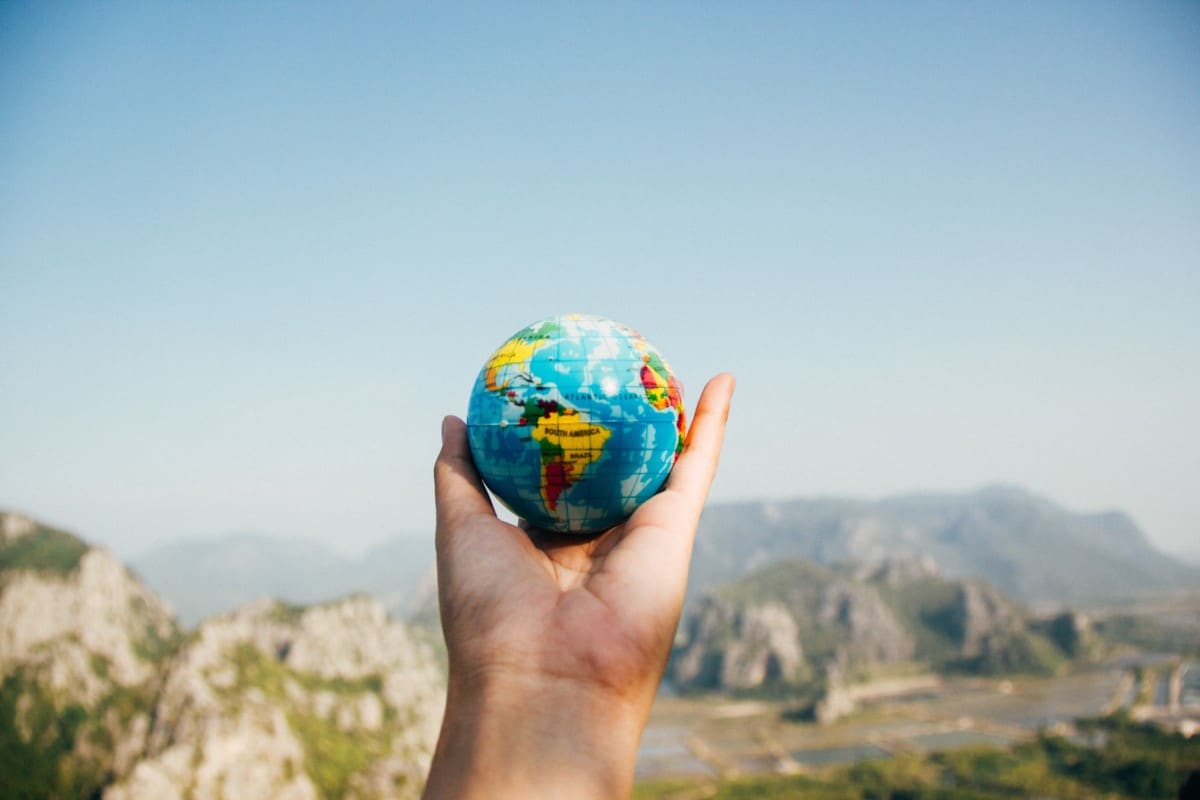The international medical market is booming, and advances in healthcare have never been so impressive. Developing nations who were once touted for their poor infrastructure and low-quality medical treatments are now at the forefront of international medical services.
With the cost of healthcare in the United States increasing year after year, more residents are looking for unique ways to get affordable medical services while also adding a much-wanted stamp to their passport.
Imagine going on your dream trip to Thailand and coming back with the smile you always want at a fraction of the standard American price?
Picture a world where you can get your teeth fixed, sit beachside for a few weeks, and come back with more money in your pocket than you’d have had if you’d chosen to have any procedure performed in the US.
Sounds impossible, doesn’t it?
For most people, it’s not that they won’t do it, it’s that they can’t do it. From limited vacation time to work that requires their constant physical presence, jet-setting off to the world’s most amazing places to get medical treatment just isn’t feasible.
Unless you’re a digital nomad that is.
Medical Tourism for US Digital Nomads has never been more popular, and here’s why.
What Is a Digital Nomad?
Digital nomads are the ever-growing trend of remote workers who don’t operate from a traditional office or partake in typical business activities such as in-person sales calls.
Digital nomads work from the privacy of their own home, coffee shop, coworking space, or virtually anywhere there’s an internet connection.
Because these remote workers have no physical ties to office spaces or in-person requirements, these people are able to work, travel, and live all over the world.
While many American digital nomads work for US-based companies, a growing number of them have chosen to live abroad while they do.
Whether they’re living on the beach or living it up in Amsterdam, their digital device is their remote office. Their remote working environment affords them the luxury of being able to travel wherever they like, whenever they like.
Pretty badass, right?
What Do Digital Nomads Do?
So, what sort of job do society’s unicorns typically have? You might be surprised.
From freelance writers to financial analysts, digital nomads typically dominate the online world of e-commerce, media, and marketing. However, I am a commercial real estate broker and I know many other digital nomads with non-traditional remote careers traveling the world.
Since everything they need can be obtained on a mobile device, tech-heavy professions that predominantly use computers and software to perform their work offer the perfect nomadic oasis for people wanting to work remotely.
Often working for multiple companies simultaneously, and operating worldwide, digital nomads have job titles such as app developers, content writers, journalists, and computer programmers.
With their no-strings-attached lifestyles, US digital nomads are more easily able to access the perks and benefits of medical tourism.
But what is medical tourism exactly?
What Is Medical Tourism?
Back in the day, medical tourism was all about people flocking to the United States to obtain first-class health services.
… but times they are a-changing!
Medical tourism in 2021 is all about US citizens seeking international opportunities for medical care. In less than two decades, the tables have turned.
From transplants and cancer treatments to plastic surgery and dental services, US citizens are more frequently seeking treatment beyond US borders.
So, what’s the deal?
With the high US exchange rate and cutting-edge medical tech booming all over the world, traditional citizens and digital nomads alike are taking advantage of the massive savings opportunity that medical tourism provides.
Medical tourism is all about travel. Think of it as a med-cation; a way to pair a vacation and medical services together. Medical tourists rarely travel for lesser-quality medical services. They’re always looking for a better quality product at more affordable prices.
Discounted services that surpass American offerings are what fuel the medical tourism market.
Since top-tier treatment is available in all parts of the world, whether you’re going to Singapore or Thailand, you can pretty much land yourself a stellar vacation and a cost-effective medical procedure by combining the two together.
The Current Climate of Medical Tourism for US Digital Nomads
Now that you’ve fully grasped who digital nomads are, what they do, and how medical tourism works, you’re probably typing up your resignation letter, buying some luggage, and hopping on a plane to … anywhere.
If you’re lucky enough to be able to do that, you absolutely should, but not before learning more about medical tourism for US digital nomads. After all, you’ll probably want to try to target your world travels according to your needs, rather than just destination-hopping.
Accessing Quality Medical Care Without Health Insurance
If you’re among the millions of Americans without medical insurance or health coverage, getting the simplest of medical procedures done can put a massive dent in your bank account. If you just turned 26 or are an independent contractor like me, I feel your pain!
Simple things like braces, physicals, and cataract surgeries can run you up to $10k in the US while the same procedures, with even better quality services and products, only cost a few thousand dollars (on the high-end) elsewhere in the world.
Both developed and developing nations are taking advantage of America’s soaring healthcare costs by marketing medical tourism directly to US citizens.
Just think? While we’re promoting Disney World, they’re promoting heart surgery sales.
For American medical tourists, it’s all about getting more for less. Digital nomads represent a large portion of residents who don’t possess adequate medical coverage.
Since the majority of digital nomads are independent workers, their lack of homegrown health benefits has sent them traveling to the edges of the world for medical treatment and exotic vacations.
What Are the Most Popular Medical Tourism Procedures?
You’re probably wondering what types of procedures all of these digital nomads are traveling abroad for?
From serious procedures like heart surgeries to vanity surgeries and cosmetic procedures, the most popular medical tourism treatments range from the most-critical to everyday medical services.
The most popular medical tourism procedures for 2020 were fertility treatments, noninvasive medical services, and cosmetic surgery. I primarily go for regular teeth cleanings, eye check ups, physicals, and bloodwork for more routine visits.
If you’re in the market for one of the most popular procedures, it won’t be hard to access.
Since the medical tourism market thrives off the needs of the millions of Americans seeking out-of-country medical services, medical communities are quick to respond to American health trends.
This is great news for US digital nomads because that translates into more competitive pricing, greater accessibility, and less restrictive services.
Cost of Medical Care
You might be wondering how much your medical service will cost you, or save you. Since they’re not covered by standard health insurance or medical benefits, you’ll be stuck paying out of pocket no matter what.
If you’re a digital nomad living in the US, or even if you’re already abroad, you’ll want to ensure you’ve read the fine print, checked what the procedure covers, and doublecheck that everything you need is included.
How Much Does Medical Tourism for US Digital Nomads Cost?
You’ll want to budget for your big medical procedure. Wherever you’re working in the world, it will be important to consult with the provider to make sure that anything and everything has been taken care of, including your healing process.
To help with accountability, translation, and ease of access, many digital nomads utilize the services of a medical tourism company. Much like a travel agency, medical tourism companies work to arrange all of your medical requirements and help interpret the technical details and jargon.
If you’re considering adding the title of ‘medical tourist’ to your nomadic resume, it’s usually wise to retain the assistance of a medical tourism professional. Not only will they arrange travel and accommodations, but they can act as a bilingual translator between you and your chosen medical company or professional.
While medical procedures can be acquired for a fraction of standard American rates, you’ll want to make sure that you’re utilizing a trusted professional, no matter how attractive the price is. Your health isn’t something you should be bartering on.
Places like India, Thailand, and Mexico are known for their unbelievably affordable surgeries and procedures. If you’re shopping for the most affordable rates, make sure you research the reviews and rankings of the hospital and medical staff before you buy. I personally try to make sure that my doctor has been trained in the US and has many years of experience.
Traveling for Medical Purposes
If you’re seeking health opportunities relating to medical tourism for US digital nomad’s, you’ll want to make sure that you have nomad travel insurance and nomad health insurance.
While travel insurance won’t help you with costs related to your procedure, it’s good to have in case you fall victim to an unrelated accident, illness, or injury.
Medical tourism companies can help arrange travel insurance for you and often include it as part of their medical tourism package.
Top Medical Tourism Countries for Digital Nomads
If you can afford the best medical care in the world, you’re in luck! The Mayo Clinic was ranked the number one hospital by the U.S. News and World Report and is located right on US soil.
However, if you’re on the hunt for the best place to spend your nomadic dollars, these countries should top your list of places to visit for your most pressing medical needs.
What Is the Best Country for Medical Tourism?
While there is no single standout choice when it comes to medical tourism procedures, certain countries are more well-known for specific services and procedures.
According to Healthcare Global, these were the top countries visited for medical tourism purposes.
Medical Tourism in India
India is constantly busy with medical tourists visiting for a variety of procedures, but if you’re a digital nomad who has heart or foot issues, you’ll want to make India your number one travel choice.
Medical Tourism in Singapore
A Singapore vacation sounds sweet! If you’re living the nomadic lifestyle or can spare the time away, Singapore ranks number one for some pretty serious stuff.
Whether you’re there for StemCell procedures or cancer treatments, Singapore’s health care system is recognized as one of the world’s best.
Medical Tourism in South Korea
If you’re looking to improve upon your digital nomad perfection with a cosmetic procedure, South Korea can’t be beaten. A prime destination for critical surgeries, its cosmetic market surpasses hearts and lungs with facelifts and body transformations.
Top Medical Tourism Cities for Digital Nomads
It’s not always about the country; certain cities are renowned for their medical services while other parts of the country are not. According to Newswise, these were the top-visited cities in the world for medical tourism.
Medical Tourism in Bangkok
Bangkok seems to have something for everyone, and medical tourism for US digital nomads is no exception. Bangkok is home to some of the most intricate surgical procedures in the world, as well as cutting-edge fertility services.
Whether you’re in the market for a quick eyebrow lift or are seeking a doctor to perform a unique surgery, Bangkok is known for its versatility and expansive medical offerings.
Medical Tourism in Budapest
As one of Europe’s go-to medical tourism destinations, Budapest is as proficient in critical surgeries as it is beautiful. Budapest’s doctors are often sought out for their expertise in spinal surgeries and mesotherapy.
Medical Tourism in Cancún
Mexico has always been the United States’ go-to for quick and easy medications and medical services.
While medical services in Mexico were traditionally accessed out of necessity rather than want, the past decades have seen Mexico grow as a medical tourism destination.
Cancún is most commonly accessed for some of the most expensive and invasive surgeries there are.
From heart surgeries and cancer treatments to plastic surgeries and brain surgeries, Cancún has become a mecca for performing life-saving surgeries on critical American patients who can’t afford the procedure in the US.
With a low-cost-of-living, geographic proximity to the US, and platinum hospitals and medical care, US digital nomads most commonly use Mexican services for their health care needs.
Common Questions About Medical Tourism for US Digital Nomads
Since medical tourism has changed in what seems like overnight, medical tourists, understandably, have hundreds of unanswered questions that a simple Google search won’t answer in one click.
From the potential of dying abroad to bringing back Mexican-issued medication to the United States, there are a lot of important things to consider before you choose to become a medical tourist.
What Risks Are Associated With Medical Tourism?
While it might seem like becoming a medical tourist is the greatest idea ever, there are still a ton of associated risks. From life insurance policies that won’t cover you to unforeseen complications during your procedure, you’ll want to consider the following:
Infection
It doesn’t matter if you’re in a US-based hospital or are abroad, infections are common after a medical surgery or procedure.
To protect yourself, you’ll need to budget extra money for medical expenses, ensure that you have someone with you (or on speed dial) who can jump in if you become incapacitated, and make sure that your travel documents permit you to reside in the country for longer than you anticipate.
Travel
Getting there might have been no problem, but what about afterward?
Many procedures will not allow air travel to occur for some time following your surgery. If you disobey medical advice, you could see yourself worse off than you started.
Ensure you’ve prearranged proper travel in advance and have consulted with medical professionals to ensure that you won’t experience any unforeseen issues.
Work
While it may not be a risk, it certainly is something you’ll need to address before you book a medical procedure abroad.
As a digital nomad, you might be able to work from anywhere, but you’re likely always working for some sort of client. Whether you’re operating as a freelancer or independent contractor, your absence may have repercussions.
Ensure that you’ve caught up on everything needed and allotted more time than required for your medical absence.
If you haven’t planned for unforeseen events, there’s a good chance you’ll face losing the very clients that have made your digital nomad lifestyle a success if they haven’t heard from you, or you begin missing deadlines.
How Do I Find a Trustworthy Medical Tourism Company?
Find a medical tourism country you can trust by putting your digital nomad skills to work. Consult other remote workers to hear about their first-hand experiences. Read online reviews, and examine international data for country, city, and hospital rankings.
Ask your current nomad health insurer or travel insurance provider if they can recommend anybody. Ensure that your company of choice has international offices, multilingual agents, and 24-hour support.
You’ll want to interview your top picks to get a feel for how they operate and how they’ll represent your needs. At the end of the day, the more research you can do the better.
Travel Wisely
The world has never been easier to access, and platinum medical services have never been more affordable when you’re traveling abroad.
Wherever your nomadic lifestyle takes you, travel wisely, and ensure that you’re taking advantage of the world at your fingertips.
If you want to explore your digital nomad insurance options, I personally use and recommend SafetyWing for affordable International Travel Medical Insurance and their affordable International Comprehensive Health Insurance.
Before you go, check out my article sharing tips on How to Work Remote Anywhere





